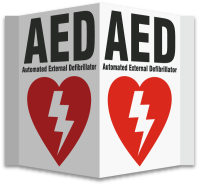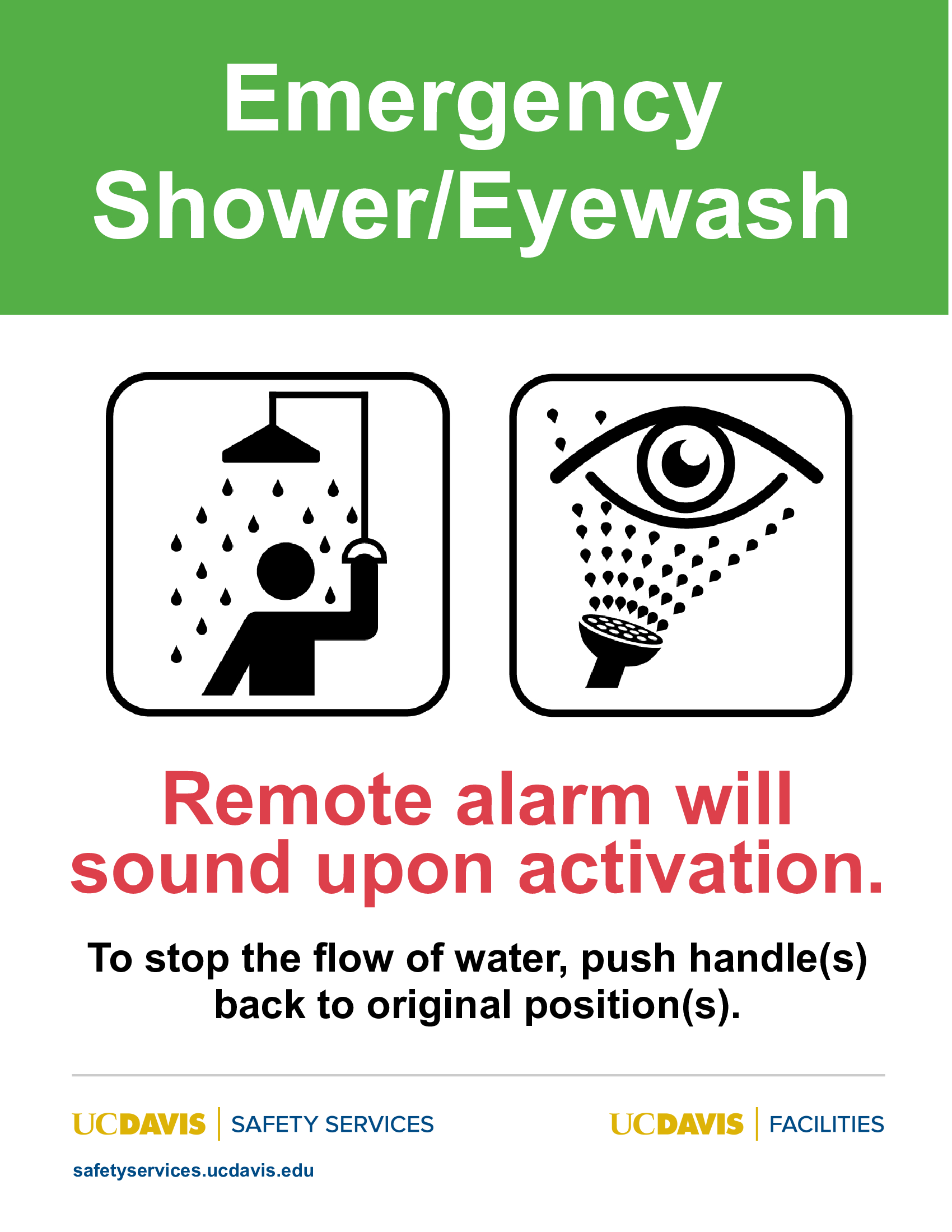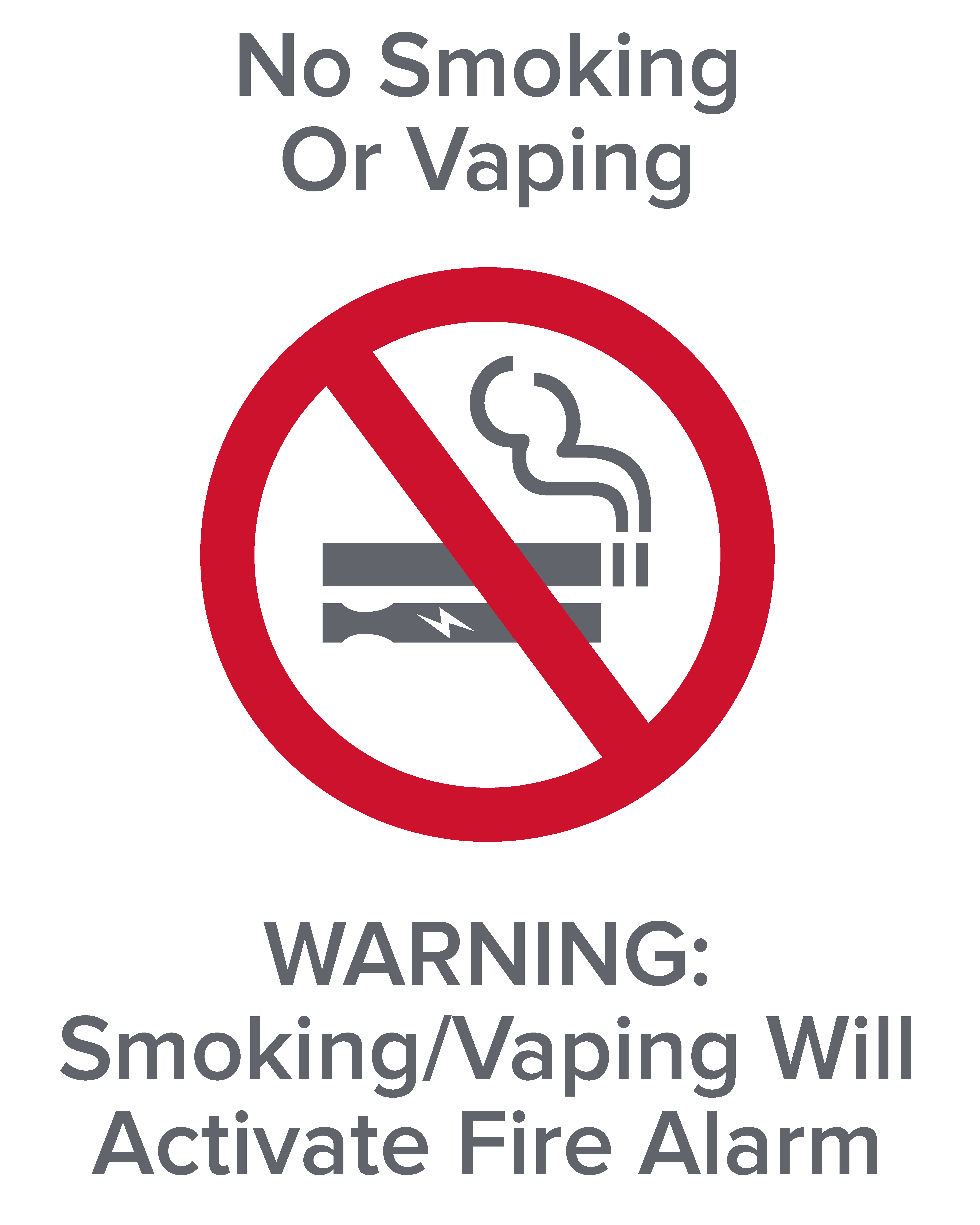This week, we're highlighting the critical elements that help keep our buildings—and the people in them—safe.
From emergency exits to eyewash stations, knowing what’s around you can make all the difference in an emergency. Whether you work in a lab, office, or classroom, take a moment to explore the resources, tools, and tips that support a safer UC Davis.
Topics Below
1. Know Your Closest Exit
2. AED Awareness
3. Vaping & Nuisance Alarms
4. Eyewash & Safety Showers (EWSS)
5. Transportation Devices Indoors
Know Your Closest Exit: Don’t Just Head for the Front Door
In an emergency, your usual route may not be the safest. This week, we’re encouraging everyone to:
- Identify two ways out of your building.
- Look for exit signage that may indicate alternate exits.
- Download and post signage to raise awareness in your area.
Questions? Contact the Fire Prevention team at fire@ucdavis.edu.
AED Awareness: Life-Saving Equipment at Your Fingertips
AEDs, or automated external defibrillators, are small electronic devices that were designed to allow minimally trained people to provide lifesaving defibrillation (electric shock to the heart) to victims of sudden cardiac arrest.
Automated external defibrillators (AEDs) are located in over 150 spots across UC Davis—and we’re making them easier to find.
- Look for AED signage on building exteriors, coming soon.
- Use the PulsePoint app to locate nearby AEDs in real time.
- AEDs are located in high-traffic areas like the ARC, Aggie Stadium, and the Memorial Union.
- AEDs are located in high-traffic areas like the ARC, Aggie Stadium, and the Memorial Union.
Why it matters:
- Survival rates drop by 7–10% every minute defibrillation is delayed.
- Only 3% of out-of-hospital cardiac arrests are treated with an AED before EMS arrives.
- AED + CPR from bystanders = survival rates up to 44%.

Prepared buildings save lives—make sure yours is equipped with an AED.
Call UC Davis Fire at (530) 754-9176 to request an AED or schedule maintenance, or use the links below:
Request an AED Request AED Maintenance
Find more information about the campus AED program here.
Vaping & Nuisance Alarms
Please remember: UC Davis is a smoke-, vape-, and tobacco-free campus. Departments are reporting increases in false fire alarms triggered by vape use, disrupting operations and safety.
- Post signage in areas where vaping is a concern.
- Share Smoke & Tobacco-Free Resources
Eyewash & Safety Showers (EWSS): Know How to Respond
We’re spotlighting the use and awareness of eyewash and safety showers (EWSS) across campus. Every lab and workspace must ensure team members know how to locate and operate this essential equipment. Here’s what to know:
- Monthly inspections of eyewash/safety showers are required. PIs and supervisors are responsible for ensuring that these inspections are completed.
- Everyone in the space should be trained on their use.
- Training and support are available through Environmental Health & Safety (EH&S). Email the EWSS team at ewss-assessment@ucdavis.edu to connect with the workgroup or to request eyewash testing and training.
How to Use
We’re working on improving clarity around this process, since it's not always intuitive!
- To activate, pull the emergency shower and/or eyewash handle(s).
- Note: Activation methods may vary by unit. Refer to SafetyNet 66 for details.
- To stop the flow of water, push the handle(s) back to the original position(s).
- Call 911 or seek medical help. Systems equipped with alarms do not trigger emergency medical responders.
- Call Facilities at 530-752-1655 for assistance with cleanup.
Download How to Use an Eyewash Station signage to post near your EWSS unit.
Alarms
UC Davis has seen a rise in emergency eyewash and shower (EWSS) activations, leading to significant building and equipment damage.
To help address this, EH&S and Facilities Management have begun installing remote alarms on EWSS units in publicly accessible areas. These alarms allow for a rapid response to shut off the flow and begin cleanup, helping minimize damage.
We are expanding alarm installations and adding signage to help respond more effectively to all types of activations—intentional, accidental, or malicious—and to prevent further damage.
Important: The alarm notifies Facilities but does not alert emergency medical responders. Injured personnel still need to call 911 or seek medical attention.
EH&S also conducts targeted outreach when a new alarm is installed, so occupants in the area are informed.
EWSS units should still be tested monthly. If an alarm sounds longer than the usual 2–5 minutes, Facilities will be dispatched automatically. You can also call them at 530-752-1655 to notify them of planned testing.
Learn more about this project here.

Transportation Devices Indoors: Know the Rules

As a Platinum Bicycle Friendly University, we appreciate your commitment to sustainable transportation—but it must be done safely:
Prohibited indoors:
- Charging or storing e-bikes, scooters, skateboards in public university spaces.
- Riding any transport device inside a university building.
Allowed:
- Storage in assigned offices or cubicles (with UL-certified devices).
- Use of wheelchairs and assistive mobility devices—always permitted.
Download guidelines and signage:
Report safety concerns to bikeprogram@ucdavis.edu or call 530-752-2453.
